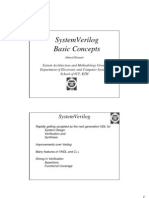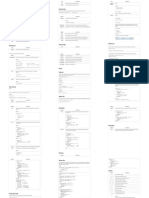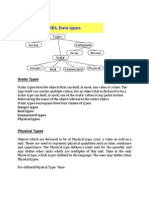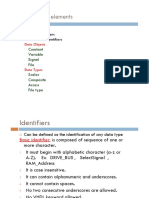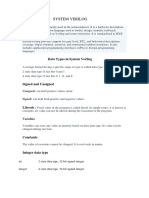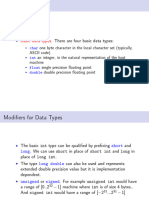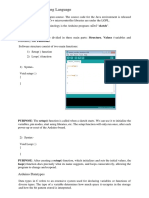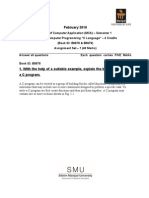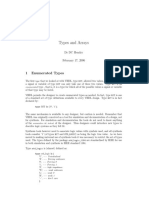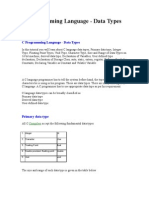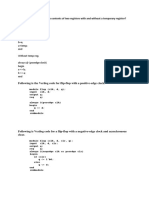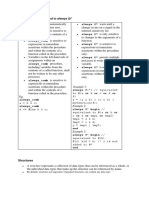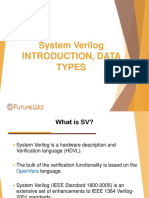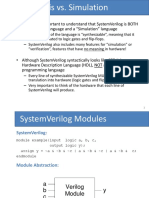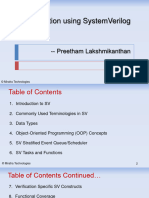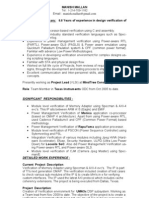0% found this document useful (0 votes)
181 views25 pagesSystemVerilog Data Types Guide
This document summarizes different data types in SystemVerilog including:
1) Structural types like wire and reg that model hardware connections;
2) Behavioral types like integer, real, and time for simulation;
3) Parameters for constants;
4) Logic type;
5) Two-state types like bit and byte;
6) Void for non-existent data; and
7) User-defined types through enumeration and typedef.
Uploaded by
RAGUL RAJ SCopyright
© © All Rights Reserved
We take content rights seriously. If you suspect this is your content, claim it here.
Available Formats
Download as DOCX, PDF, TXT or read online on Scribd
0% found this document useful (0 votes)
181 views25 pagesSystemVerilog Data Types Guide
This document summarizes different data types in SystemVerilog including:
1) Structural types like wire and reg that model hardware connections;
2) Behavioral types like integer, real, and time for simulation;
3) Parameters for constants;
4) Logic type;
5) Two-state types like bit and byte;
6) Void for non-existent data; and
7) User-defined types through enumeration and typedef.
Uploaded by
RAGUL RAJ SCopyright
© © All Rights Reserved
We take content rights seriously. If you suspect this is your content, claim it here.
Available Formats
Download as DOCX, PDF, TXT or read online on Scribd
/ 25








